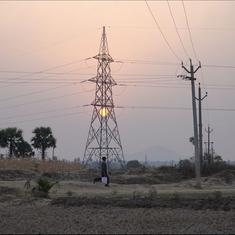Jeyamohan’s Stories of the True is a collection of twelve stories, wrested from real life, steeped in disconcerting truths about human behaviour, ethics, prejudice, and the praxis of living. Translated from the Tamil by Priyamvada, these are stories about real people, bringing extraordinary meaning to ordinary lives.
The “true” that is explored in these stories is a concept significantly at variance from the notion of a pre-determined, monolithic truth. In the post-truth world we inhabit, no value accrues to an abstract, notional truth, anyway. The stories are instead, an exposition of individual journeys that sometimes inspire and sometimes excoriate, but inevitably, as a much-needed balm to cynicism, they leave the reader with a sense of hope, a desire to believe in the possibility of redemption.
In the Preface to the book, Jeyamohan writes of how a sense of history is fundamental to literature. His stories reflect the truth of this pronouncement by being rooted in the experiences of the land; experiences of class, caste, and gender; of oppressions, and the dogged will to fight them. The author persona often appears in the stories, acting as observer, interlocutor, and chronicler.
The first story, “Aram: The Song of Righteousness”, sets the tone for the collection. With its primary events unfolding in the 1950s, in an India just settling into patterns of independence, the story looks at one man’s crisis of confidence in his art, but also becomes an indictment of the emerging pulp fiction industry and its exploitation of young writers who had no rights over their own work. The title is derived from the powerful image of a woman, a wife who could easily be subsumed into the larger narrative of a world of men, but who becomes, instead, an avenging goddess simply by insisting on the right thing being done.
In “Nutcase”, Poomedai, a Gandhian freedom fighter and champion of the rights of the oppressed, is repeatedly dismissed as crazy for his idealism and his willingness to run headlong into ideological battles. In “The Meal Tally”, a man resists the inexorable logic of capitalism sweeping over the land, practicing kindness and generosity instead. The scope of these stories spans several decades, often connecting the past to the present, presenting the reader with unmistakable evidence of the recurrence of historical patterns.
Caste and gender
Caste, that impossible to erase marker of identity in India, runs through these stories, showing up in all its ugly pervasiveness. “He Who Will Not Bow”, set in a pre-independence world, tells the story of a boy, barely eight years old, put through extreme degradation and dehumanisation. The child’s livelihood and his life, his entire sense of embodiment and selfhood, belong not to him but to his master. The politics of caste is intertwined with the politics of names.
“Meaningful” names are the domain of those who have caste privilege. Those who don’t, get names that are descriptors, much as names given to animals are often descriptors. Jeyamohan lays bare the anatomy of a world where a “low-caste” officer wearing a shirt and sitting on a chair is a threat to those who have been “divinely ordained” to rule over his life.
The inevitable internalisation of caste prejudice is explored in “A Hundred Armchairs” where the protagonist is a government official born in what was seen as an untouchable caste and is never allowed to shed the label his birth has settled upon him. The story also focuses on an often-ignored aspect of caste oppression- the denial of medical services, pointing at the complicity between state machinery and public consciousness. Another lens through which the stories negotiate caste is that of hunger, brought on by severe poverty, resolvable only through equity and kindness.
Like caste, gender, its limitations and problematics, percolate into many of Jeyamohan’s stories. “Penance of the Goddess” begins with the poetic image of a small shrine that has no idol but only “an impression on the rock face, like a footprint. (…) The belief is, it was the impression made by Goddess Kanyakumari’s foot as she stood in penance on one leg, determined to marry Thanumalayan, the deity of the Suchindram temple.”
The story seems to concern itself with the narrator’s grandfather, a legendary singer, till it inverts the narrative and becomes a story of erasure, of the silencing of the great man’s wife’s voice, forcing her into a lifelong penance, an act of punishment visited on her for her gender. Comparing the eponymous goddess with Nataraja, the god with the raised foot, the narrator asks, “If Nataraja sets down his raised foot, an aeon ends; the universe and all matter, animate and inanimate, will perish- that’s the story. What will happen if the goddess sets down her raised foot? Nothing at all. She’s a mother, isn’t she?” Mothers, revered in theory and ignored in real life, seem to be a constant in the interface between our mythologies and our lived reality.
In story after story, the writer deftly weaves in motifs from classic Tamil poetry into contemporary concerns to make what looks like a philosophical study of human nature. In “The Churning Curd”, for instance, Kamban’s Ramayana appears as a rich intertext for understanding the relationship between love and sorrow, intimacy and loss, mediated through empathy.
“Peruvali”, telling the story of Komal Swaminathan, Tamil writer, film director, and journalist, credited with having infused new life into the Tamil literary scene, explores, with an extremely delicate touch, the meaning of existence through an awareness of pain, working towards achieving the goal of loneliness – not an alienating sense of isolation from all else, but a rarefied sense of having attained equality with everything that exists, a moment of perfect self-actualisation.
“Elephant Doctor” also concerns itself with pain, making a distinction between the worlds of humans and animals, where animals accept pain as yet another aspect of life while humans never can. The pursuit of an unattainable perfection, the writer seems to say, is the human condition, doomed to failure. Jeyamohan’s stories inspire the reader to pause and to turn inward, to let go of divisive ideas and embrace a space where there are no heroes and villains, “just ordinary people trapped in this thing called life…they grow jealous, they become resentful, they try their utmost to usurp what belongs to others.”
Translating distance
The translator’s rendering of the Tamil title Aram, approximating the Sanskrit “dharma”, into “the true” is an act of resistance to linguistic hegemony. Priyamvada consistently avoids simple substitutions, refusing to lull the non-Tamil reader into easy familiarity and consequent distancing from the cultural spaces the stories belong to.
The translator engages with the challenge of taking a complex set of stories to a wider audience and in doing so, in her own words, makes the language “journey through the various changes of pace within the length of these stories,- the leaps of imagination, the stillness of introspection, the vigour of dramatic moments and so on- seamlessly.”
Stories of the True, appropriately enough, also defines the “true” of the politics of translation – a process of bringing a language, its poetics and its dynamism, a few steps closer to an audience that desires understanding, not homogenisation.

Stories of the True, Jeyamohan, translated from the Tamil by Priyamvada Ramkumar, Juggernaut.










